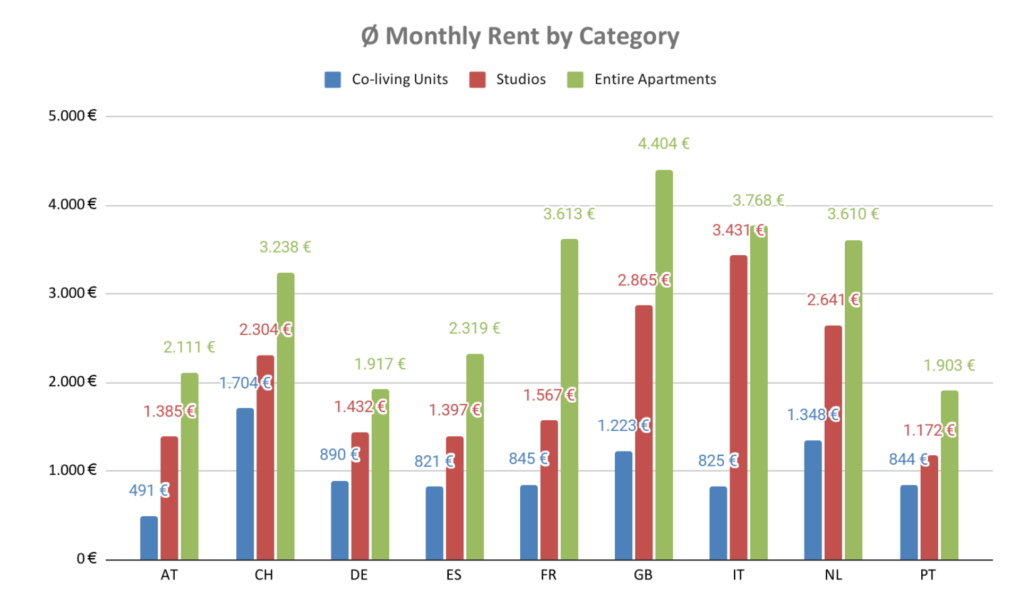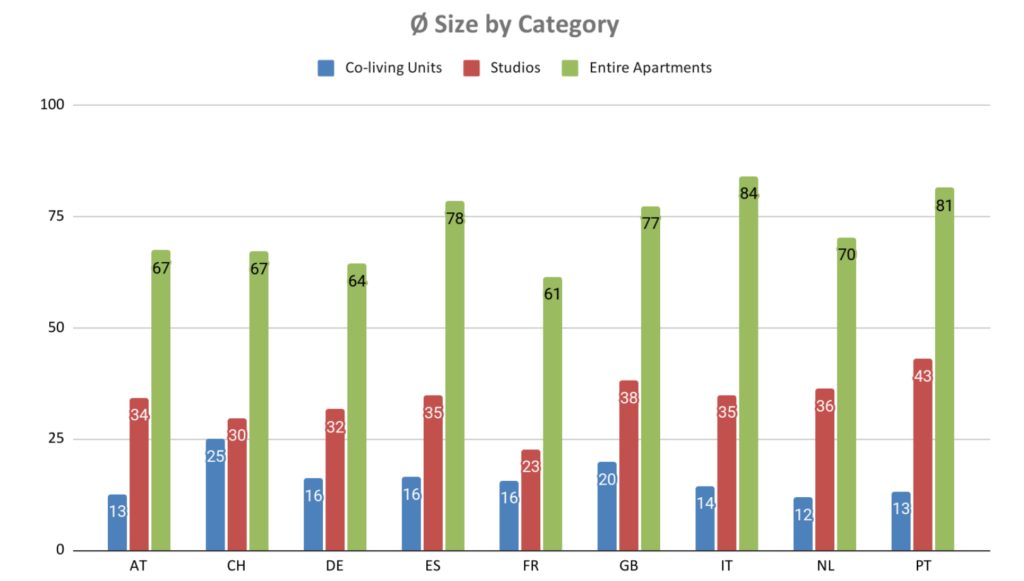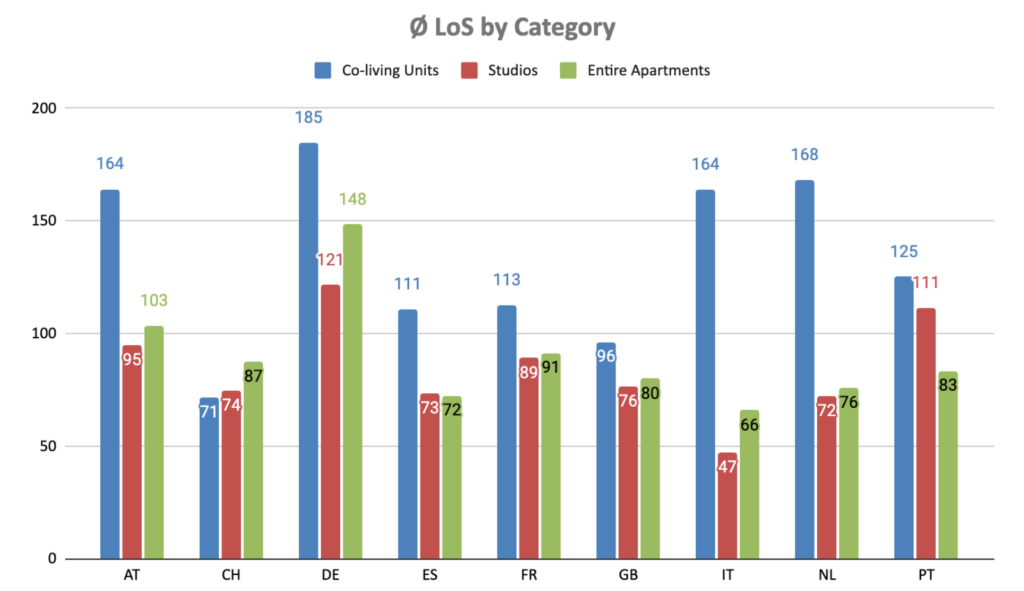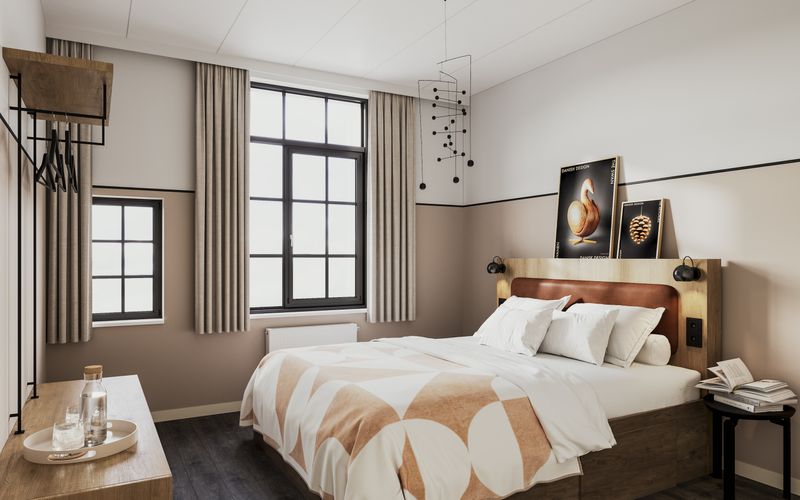Sean Wewer, Homelike‘s country manager – DACH and Italy, shares some insights on the rise of coliving and what this means for serviced apartments.
Coliving has revolutionised the housing market, disrupting conventional housing options and reshaping lifestyles and social interactions. It offers a unique combination of affordability, community, and convenience, designed to promote social connections and a sense of belonging. These spaces appeal to individuals seeking more than just a place to live.
Since 2020, we’ve seen an increase of coliving supply – surging from less than two per cent to over 22 per cent. This surge poses a challenge for serviced apartment operators, prompting them to adapt to this evolving trend. Traditional serviced apartments, known for their focus on privacy and individual living spaces, now face competition from coliving spaces that emphasise shared amenities and communal living areas at a much more competitive pricing. However, forward-thinking serviced apartment operators are embracing this trend rather than viewing it as a threat.
A shift in customer preferences – for example, young professionals during temporary stays – is compelling serviced apartment operators to reevaluate their business models and implement strategic adjustments. Many operators are revamping their properties to include shared spaces like communal kitchens, lounges, and coworking areas. Additionally, they are leveraging technology to enhance the coliving experience, utilising mobile apps for resident connectivity and smart home systems for added convenience.
In addition to fostering community bonds, coliving offers a more cost-effective alternative compared to traditional housing options. With rising living costs affecting urban areas, especially impacting young professionals and those starting their careers, coliving emerges as a financially savvy choice. By pooling resources for rent, utilities, and other expenses, residents can save money while enjoying well-designed living environments.

Coliving units average 47 per cent less expensive than studios, and an impressive 65 per cent less than entire apartments. This substantial cost difference positions co-living as an attractive and budget-friendly option for individuals in search of affordable housing solutions.
The lower monthly rent of coliving units is directly linked to their smaller average size. This relationship between size and cost highlights the economic appeal of coliving setups, where residents can enjoy cost efficiencies due to the compact living spaces. Coliving units typically have an average size of 19 square-metres. In comparison, studios, which integrate living and sleeping areas, are larger with an average size of 34 square-metres. Entire apartments, featuring multiple rooms and amenities, boast the largest average size at 72 square-metres.

While a coliving unit may be compact in living space, potentially raising concerns about adequacy for extended stays, this limitation is offset by expansive shared areas like lounges, coworking spaces, well-equipped kitchens, fitness centers, rooftop gardens, communal dining spaces, and more. These communal facilities are accessible throughout the guest’s stay and foster an environment that encourages resident interaction and engagement through diverse events and activities. Consequently, the importance of the own living space diminishes as the focus shifts to shared community spaces.
Coliving units demonstrate a significantly longer average length of stay compared to other categories, with an average of 4.5 months, followed by three months for both studios and entire apartments. The extended average stay in coliving spaces is not only due to competitive pricing but is also influenced by a higher percentage of students and young professionals seeking accommodations for a longer period. This trend reflects the appeal of coliving for individuals looking for flexible and community-oriented housing solutions.

The ascent of coliving brings forth a blend of opportunities, but also challenges. One notable challenge lies in striking a delicate balance between privacy and community within these communal living spaces. While coliving thrives on social connections, it is essential to offer residents the option of privacy when desired, a feature commonly found in studios or entire apartments. Operators must ensure that residents have access to private areas like bedrooms within the coliving setup, with the level of privacy varying based on the chosen coliving type.
Another challenge for coliving operators involves meeting the diverse needs and preferences of residents attracted to the coliving concept. These environments draw individuals from various backgrounds and age groups, each with distinct expectations and requirements. Some providers may impose restrictions such as age limits (eg. 18-35 years) or gender-specific allocations in certain shared areas like bedrooms or bathrooms.
Operators can navigate these challenges by implementing strategies such as establishing clear boundaries, fostering open communication, promoting shared responsibility among residents, conducting thorough tenant screenings, providing conflict resolution training, and cultivating strong communities founded on mutual respect and collaboration. Addressing these challenges effectively enables operators to create inclusive living environments that cater to the diverse needs of all residents.
The rise of coliving has undeniably made a significant impact on the rental industry, establishing a trend that shows no signs of slowing down and is projected to continue its upward trajectory. This presents a substantial opportunity for apartment operators to capitalise on this market trend and broaden their offerings.
If you’re interested in learning more about the coliving sector, subscribe to SAN’s sister brand Urban Living News here.










